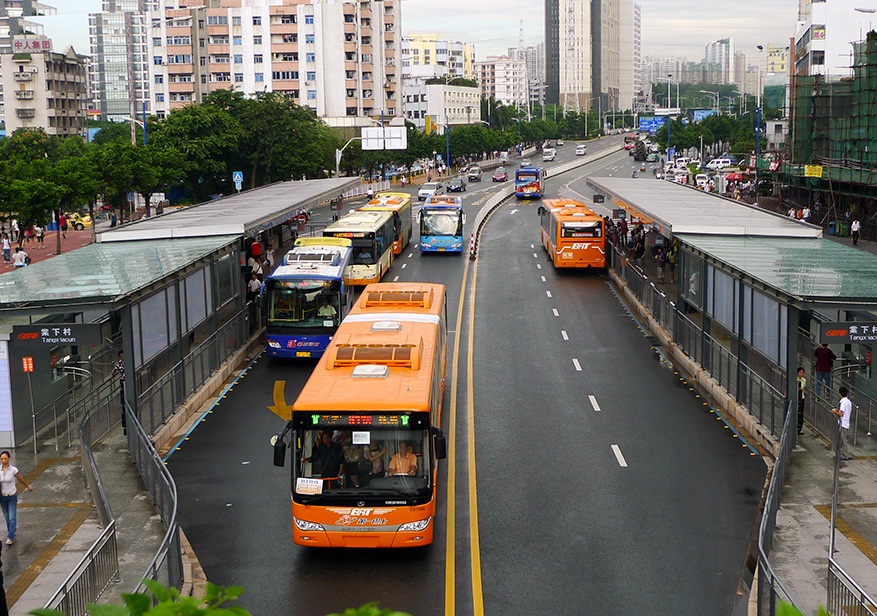Streetfilms, in partnership with the Institute for Transportation & Development Policy (ITDP), produced a new video highlighting Guangzhou’s bus rapid transit (BRT) system. The BRT system won the city the 2011 International Sustainable Transportation Award from ITDP, and currently serves 800,000 passengers each day.
The system is by far the largest BRT system in Asia, but comes in behind Bogota’s Transmilenio system which serves 1.2 million riders daily. The similarities are striking though. Both Guangzhou and Bogota include robust stations and heavily dedicate right-of-way. The systems are also being built in combination with other forms of transport instead of lieu of them.
“You must also think about multi modal integration,” says Xiaomei Duan, Chief Engineer, Guangzhou BRT Project. “For example, on this corridor we have three metro stations integrated with our BRT station, and around the BRT stations we have our bike stations.”
Guangzhou is the second largest city in the world with approximately 25 million people, and it is one of the fastest growing cities in the world. The implementation of the new BRT system was done, in part, to cut carbon emissions, reclaim space for people and reduce traffic congestion.
The Guangzhou BRT system opened in February 2010 and was designed to now be completely integrated with the city’s new bike share network and metro system.
